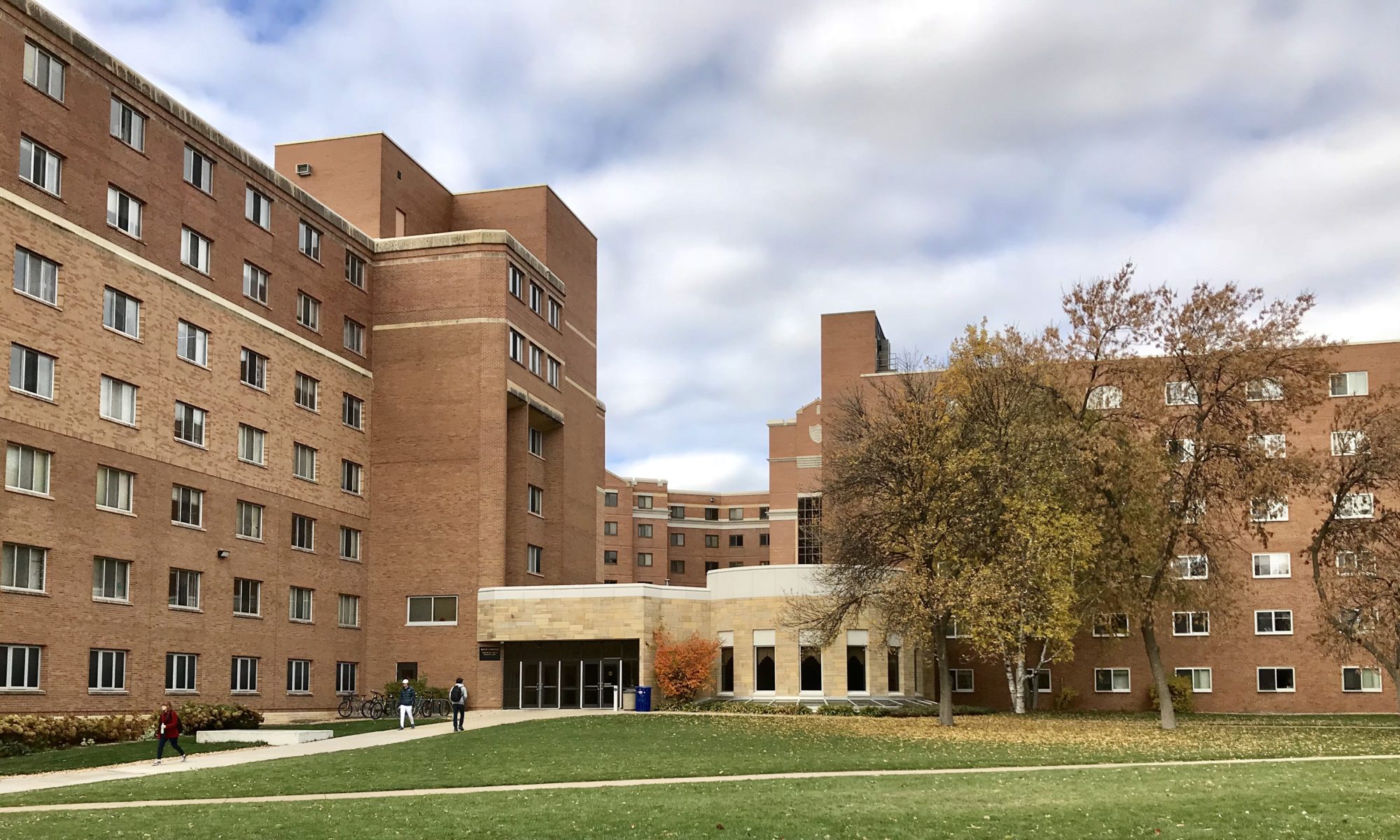A new class of first-year students arrives on campus every fall, but this year’s students have the distinction of being the largest class in St. Thomas history.
Multiple areas on campus have been renovated into housing for the first-years, including basements and common areas.
“Expanded housing is a very common thing across the country for colleges and universities,” said Aaron Macke, the associate dean of students and director of residence life. “It’s a flexibility piece.”
Residents of expanded housing pay $2,493 a semester. If these students are moved out of expanded housing, they will pay the 2018-2019 school year traditional Brady Hall or Dowling Hall room cost of $3,275 per semester, Macke said.
Macke said expanded housing was last used in the fall of 2015. At that time, only the Dowling Hall lounges were used.
Expanded housing options
This year, the Dowling Hall lounges, Brady Hall lounges and Koch Lower Level are being used as expanded housing.
“We went to our current sophomores, juniors, seniors who were living in traditional hall spaces … and offered them space in the faculty residence building,” Macke said. “We were able to free up 35 beds in there we also were able to free up 20 beds down in (two Cretin Avenue apartments).”
Flynn, Murray and Faculty Housing options are not counted by the university as expanded housing.
The rearrangement opened 55 spots in traditional hall spaces for first-year students. There are 17 first-year students living in Flynn, all of whom are paying the same price as they would for a Brady or Dowling Hall double room.
“We didn’t want the families who had budgeted on a Brady/Dowling rate … to pay more for a Flynn dorm,” Macke said. “We didn’t want to punish them for that.”
Residence Life is still deciding how to organize housing reapplication for next year. It is unlikely that they will be able to retain their Flynn suites, Macke said.
For first-years, the university runs a lottery because most students coming into the university have the same range of credits. The university tried to honor housing preferences, Macke said.
Expanded housing communities
While expanded housing may not have been what students expected when they first came to the university, some have created their own communities.
In Dowling, the first-year dedicated female dorm on campus, the lounges have been transformed to house five females each. First-year student and Dowling lounge resident Autumn McKinney said she likes it more than she expected to.
“You meet more people,” McKinney said. “If you have more than one (roommate), there’s always a chance that someone will be there.”
The lower level of Koch Commons houses 11 first-year male students. It is commonly called the “Brady Barracks” and can house up to 15 students.
“They call it the barracks because they thought it was like barrack style, in terms of army barracks,” Macke said. “Even though it’s broken up into rooms, it’s all kind of one large area.”
The Barracks resident adviser, Sylvester Nwosuji, said he is trying to build community among the residents.
“The way that place is built down there, it’s more in the sense of like you’re in a pod,” he said.
In traditional Brady Hall housing, residents have one roommate, a door and four solid walls. Barracks residents also have one roommate and most of the standard furniture. The only difference is that they have a curtain instead of a door.
“It kind of sucks. I would definitely prefer to have a door,” Barrack resident Grant Saari said. “It’s mainly just the privacy thing. It’s not too bad, I’ve learned to adjust.”
Barrack wardrobes are located outside of the rooms and can be locked. Saari said only residents have access to the area and no one has experienced theft.
“The wardrobe is the thing I rarely go to, and it’s weird that you lock it,” Saari said, “but you gotta do what you gotta do. It’s better than what I thought.”
Expanded housing determined by deposit date
Macke said that students were placed in expanded housing because of their deposit date, and that expanded housing allows the university to house first-year students who may have had to live at home or off-campus.
“I don’t think anyone would say it’s the ideal situation,” Macke said. “However, we do find out that a lot of our students that end up in expanded housing don’t mind it at all. In fact, some kind of like it.”
Admissions Director Kristen Hatfield said the university received around 6,500 applications and admitted a little over 5,000 of them. She said this year’s acceptance rate was 82 percent, which is about average.
First-year students are asked if they would like to live on campus and must submit a $200 deposit. This deposit does not confirm or guarantee housing, only a place in line for housing.
Macke said residence life hopes to move students out of expanded housing and into regular housing as students move around for spring semester.
“The goal then is between the fall semester and the spring semester to move people out of expanded and into regular…hopefully it’s a one semester deal,” Macke said.
Rachel Torralba can be reached at torr3544@stthomas.edu.

